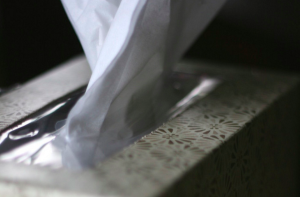
Source: Everyday Feminism
When I tell people that I used to live and teach in Hawaii, I always need to brace myself for the responses. And by responses, I mean deeply problematic stereotypes.
Chances are that you, reader, might be traveling to Hawaii for a vacation or honeymoon in the near future — and lucky you! Hawaii is amazing.
But Hawaii is also an actual residence for people (and a specific group of peoples), and it’s important for us to recognize the harmful stereotypes we often perpetuate when we talk about Hawaii.
So let me tell you a little about Hawaii and Native Hawaiians to prepare you for your journey.
1. Native Hawaiians Are Asian
It sounds silly and untrue when you put it like that, but yes, I hear this myth all the time:
PERSON I JUST MET: “So where did you move from?”
ME: “I moved here from Hawaii. I used to teach there.”
PERSON I JUST MET: “Oh! I didn’t know you were Hawaiian!”
ME: “I’m not. I’m Chinese.”
PERSON I AM NOW JUDGING: “Oh, sorry, you could totally pass as Hawaiian.”
Ummm.
See, there is an actual difference between being a resident of Hawaii and being a Native Hawaiian.
A resident of Hawaii is someone (of any background) who just, you know, lives in Hawaii. A Native Hawaiian is someone who belongs to a specific group of people with shared traditions. Native Hawaiians, or kanaka maoli, are descendent from the original Polynesians who settled in Hawaii around the third century.
And yet, there exists a conflation between Asian culture and Native Hawaiian culture. (Let’s be honest, if I were a non-Asian woman, no one would assume I was Native Hawaiian when I tell them I used to live in Hawaii.)
So how did we come to conflate residency with race? And specifically, how did we come to conflate Asian culture with Native Hawaiian culture?
Back in the late 18th and early 19th centuries, the United States began trading heavily with China and other parts of Asia. Hawaii and other neighboring islands began to function as stopovers for this trading. Chinese, Japanese, Filipino, and Korean traders eventually settled in Hawaii.
By the 1930s, Hawaii’s population was about 40% Japanese, about 20% Chinese, and only about 25% pure or part Hawaiian.
And then the media swooped in and pretty much established our current ideas about Hawaii. Check out this promotional ad for the 1961 film Blue Hawaii.

Pay attention to the non-white characters. Yep, those ladies look pretty Japanese to me.
The non-white characters from Hawaii Five-O? Sorry to disappoint, but they are Korean.

The images of “Hawaii” and “Hawaiian people” have been predominately accompanied by East Asian faces.
So, yes, I know. Of course, I could “pass as Hawaiian” — Hawaiian culture has historically been wedded to Asian culture, specifically East Asian culture. I, as an East Asian woman, should not be upset if a stranger assumes I am Native Hawaiian, right?
Wrong.
Why is it harmful to classify Native Hawaiians as “Asians,” you ask? Because when the term “Asian” is so intimately yoked to the problematic and one-dimensional idea of “model minority,” Native Hawaiians are not just misrepresented but unrepresented.
That’s right. By placing Native Hawaiians in the “Asian” category, we systematically erase Native Hawaiian culture, identity, and most importantly, Native Hawaiian needs. When Asians are supposedly successful and don’t need assistance, Native Hawaiians lose out.
When we’re sloppy and equate one group of people with another, we render people invisible. When we say “You’re all the same,” we basically say “Your differences don’t matter to me.”
2. Native Hawaiians Live in Grass Huts and Have No Worries
So what do we really know about Native Hawaiians? Go ahead, I’ll wait as you sift through your mental images of women in grass skirts, ukuleles, lounging, and lots of leis.
Lots of leis and lots of lounging. That’s what most people think of.
Forget the huts. The reality is that about one-third of Hawaii’s homeless population is Native Hawaiian. Not a big deal — until you consider this: Native Hawaiians make up only 10% (one-tenth) of Hawaii’s population.
Huts sound pretty good right about now, huh?
Native Hawaiians have been fighting homelessness since the 1800s when settlers first occupied Hawaii. Historians estimate that almost 80% of the original Native Hawaiian population died from contact with European diseases.
Already a dwindled population, Native Hawaiians gradually lost more and more control over their lands (to businessmen, missionaries, and the US military, among other stakeholders) until 1893 when the Hawaiian Kingdom was overthrown. (That’s right. Overthrown. They didn’t tell you about the genocide and illegal takeover in your textbooks.)
In 1921, Congress passed the “Hawaiian Homes Commission Act,” which was designed to rehabilitate the Native Hawaiian population and their loss of native lands — by setting aside a whopping 3% of the total land for Native Hawaiians.
To live in the Hawaiian homesteads, Native Hawaiians need to apply and prove their Native-Hawaiian-ness.
“Native Hawaiian” is defined as a person who is at least 50% Native Hawaiian. So if you happen to have a blood quantum (yes, that’s what it’s called) of one-quarter, because someone in your family tree loved a non-Hawaiian, you’re not Hawaiian enough. You lose your right to homestead.
This is land that Native Hawaiians are entitled to — it was stolen from them. Instead they are being punished for continuing to live amongst the people who illegally settled their land.
Hawaii is a very diverse place. Almost one-in-four Hawaii residents are of mixed race with the largest group being Asian and Native Hawaiian. Thus, the amount of people who meet the blood quantum requirement dwindles significantly with each generation.
Yet there are currently 21,000 Native Hawaiians on the waiting list to live on the Hawaiian homesteads. Yes, that’s 21,000 people.
One man waited 40 years before he was granted a home. (By then, he was 72 years old and could not afford the house.)
When the Hawaiian Homelands waiting list is so long and so many Native Hawaiians are homeless, it is an understatement that Native Hawaiians are struggling to preserve their people and their land.
One suggested solution? Increasing the blood quantum and requiring even more Native-Hawaiian-ness. I’ll pause as you throw a chair.
For Native Hawaiians, Hawaii is not the grass hut paradise that we pretend it is.
3. Native Hawaiians Are Friendly to Everyone — They Live Aloha!
Movies and vacation stories do a great job of painting the people of Hawaii as being relentlessly friendly.
And it’s no lie. I’ve never felt as welcomed as I was when I lived in Hawaii. Aloha — striving to do everything with love and respect — is indeed deeply ingrained in Native Hawaiian ideology, and it dates back to a time when Native Hawaiians lived off the land.
However, interviews with older generations of Native Hawaiians revealed that aloha did not hold as much prominence in pre-contact Hawaii. Aloha was just one of many important values in ancient Hawaiian culture, but was later repackaged and heavily pushed by Christian missionaries to convert Native Hawaiians.
Aloha was eventually coopted as a “slang” to drive tourism. Hawaii became a “she” – mystical, magical, and hospitable. Hawaii welcomes you with open arms when you need an escape from your demanding job; she awaits you with a smile, fresh lei, and Mai Tai. She, Hawaiian culture, is your erotic prostitute, ready to act out your fantasies.
The aloha spirit is commodified and packaged to sell the Hawaiian culture to tourists.
There is a store in the Honolulu airport that reminds you to “Bring Home Aloha!” as if the stuff can be bottled up and shipped overseas. It’s a pretty smart idea. If during your trip you keep hearing the importance of aloha, you’ll start thinking: “What should I buy my sister? Ah, yes. Plumeria earrings.”
And as a tourist, you will hear “aloha” frequently. Don’t be fooled. People who live in Hawaii actually don’t say “aloha” that often. But tour guides will make you believe it with their “Alooooooha!” as they greet you. It’s like going to Texas and hearing everyone say “Hoooooowdy partner!”
Native Hawaiian culture has become a caricature of itself in order to sell itself. And this commodification of aloha spirit can only persist when we continue to fetishize Native Hawaiian culture.
When we imagine life in Hawaii to be drastically different from our “real lives,” Hawaii becomes something exotic. It becomes a fantasy for busy people and honeymooners to visit rather than a place of residence.
But Native Hawaiian culture is not your fantasy. Native Hawaiians are an indigenous group of people struggling to survive on 3% of the land. Currently, tourists outnumber residents 6 to 1, and they outnumber Native Hawaiians 30 to 1.
Know that the aloha you experience is an inaccurate caricature. It is a way to fetishize a group of people in order to make money.
What You Can Do
So what should you do? Avoid Hawaii? I don’t think you should. Hawaii is amazing.
But please be aware of your role as a tourist. Your contribution to this $14 billion industry also helps create homelessness by driving up the price of real estate (which Native Hawaiians just call “land”) and perpetuates cultural myths about Native Hawaiians.
On your next trip, spend time in Waikiki and spend your money there, but you should also venture out and drive through Waianae. Visit the “rougher” parts of Hawaii — the side of Hawaii that tourists don’t see when all they do is snorkel and tan.
Visit the Hawaiian Plantation Village, where you can learn about how the pidgin language was developed and how different cultures learned to live together.
This sounds strange, but pay attention to bumper stickers. You may hear “Aloooooha,” but bumper stickers tell the real story. You’ll see the phrase “We grew here, you flew here” and pictures of Hawaiian warriors as the “Original Homeland Security” adorning cars if you keep a lookout.
Most of all, be aware that most of the people around you probably are not Native Hawaiian. Remember that you greatly outnumber the local population and the Native Hawaiian population.
***
Let’s get one thing straight: Hawaii is officially part of the United States, but in no way are its people sovereign.
Be aware of Hawaii’s history of colonialism and the continued commodification of Native Hawaiian culture. They have helped to rewrite a culture, but these myths can only survive when we let ourselves be lazy.
If all you expect to see grass skirts and smiles, all you’ll see grass skirts and smiles.
[do_widget id=”text-101″]
Amy Sun is a Contributing Writer for Everyday Feminism. She has worked with providing resources and support for Asian/Pacific Islander survivors of domestic violence in the DC, Maryland, and Virginia areas. She also holds her Masters in Women’s Studies from the George Washington University, where she has researched the coming out processes for trans people who identify as FTM and MTF. In her past life, she was a middle and high school math teacher.
Search our 3000+ articles!
Read our articles about:
Our online racial justice training
Used by hundreds of universities, non-profits, and businesses.
Click to learn more




















